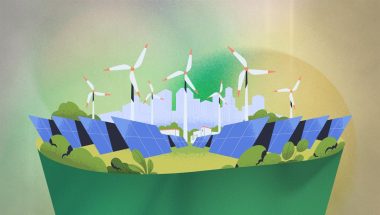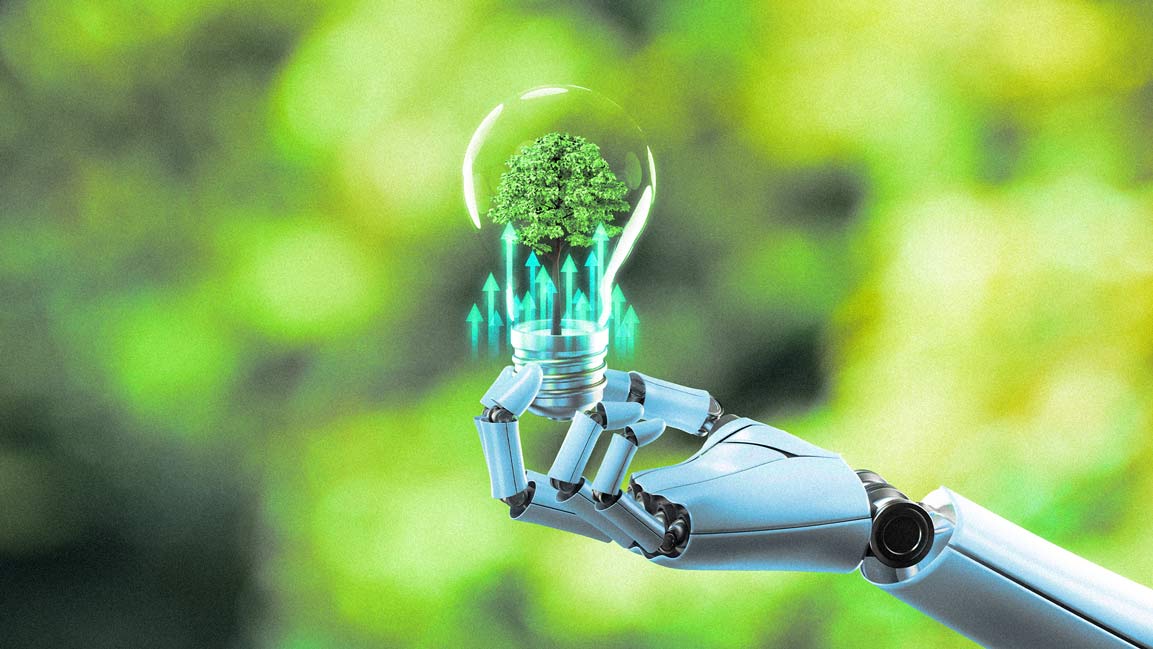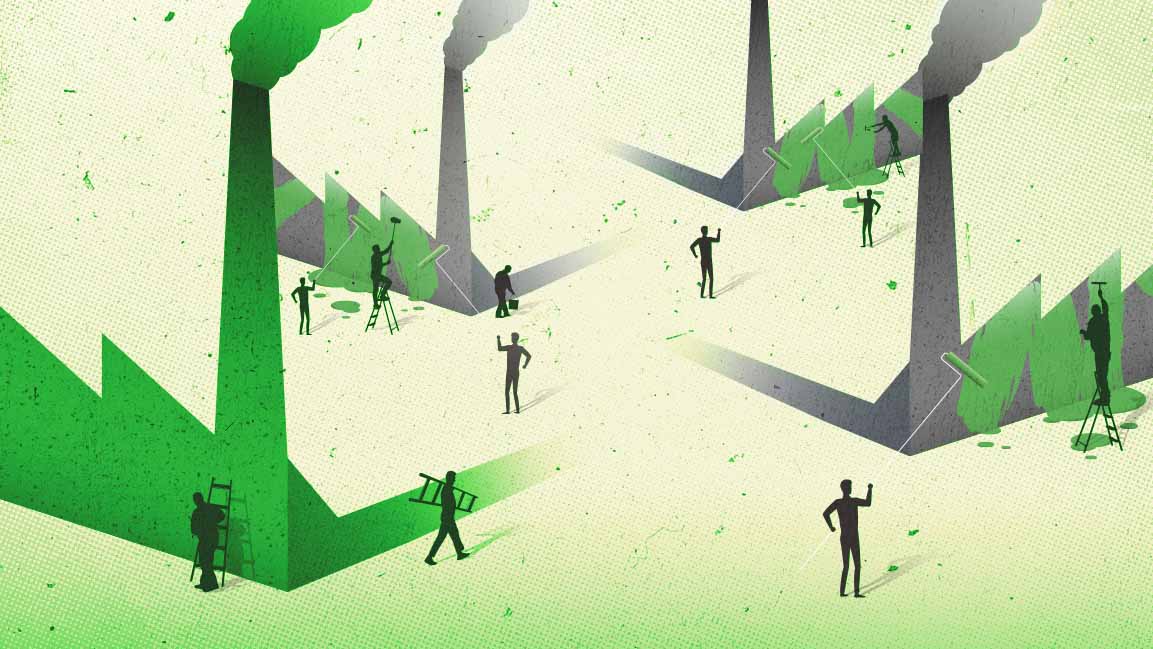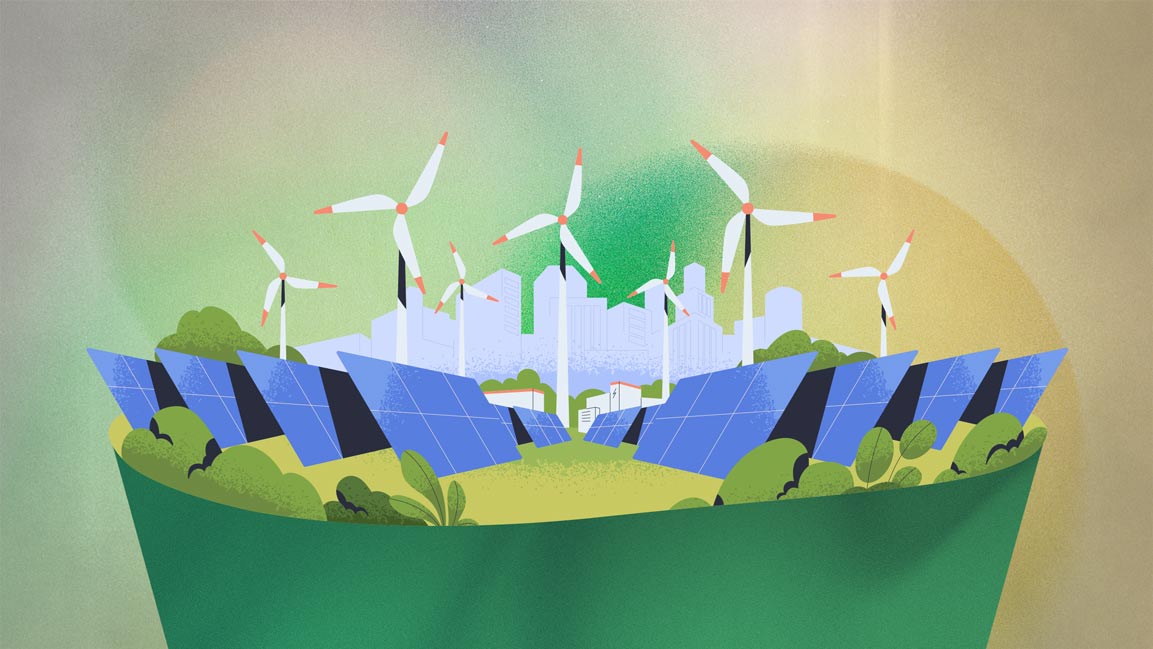- | 8:00 am
Green jobs are booming, but there’s a big skills gap. Here’s how companies can fix it
The demand for green jobs is outpacing the production of green talent. Companies can change that with better training—and by recruiting from a deeper, more diverse talent pool.

The long-running effects of climate change are coming home to roost. Historic droughts, increasingly frequent wildfires and more violent storms have spawned an international migrant crisis and growing concerns over the long-term availability of food, water, and arable land.
As the polar ice caps melt and the oceans rise, economic forecasts point to another kind of danger: More than 800 million jobs—roughly a quarter of the global workforce—are vulnerable to the changing climate and the necessary transformation of industries around the world to confront this existential threat.
But from adversity comes opportunity. To respond to climate change and create a net-zero planet where greenhouse gas emissions are virtually eliminated, companies around the world by 2050 could create more than 300 million additional green-collar jobs and launch a new industrial revolution.
The U.S. is making some progress on this front. Approximately 875,000 Americans already hold jobs related to sustainability, renewable energy, and conservation. Over the next decade, the number of green jobs in the U.S. is expected to grow by another 114,000, or 9%. Specialized green jobs such as wind turbine service technicians and solar photovoltaic installers are projected to increase by more than 50%, according to the U.S. Bureau of Labor Statistics. And roles in climate protection—such as environmental engineering and conservation science—pay significantly higher salaries than the national median wage.
But the demand for green jobs is outpacing the production of green talent. Jobs that require green skills—building blocks such as waste prevention, environmental remediation, and other abilities that promote environmental sustainability of economic abilities—are crucial to this green transformation. A 2022 LinkedIn report found that job postings that require green skills have increased by 8% per year over the past five years, even as the pool of green talent grew by just 6% a year over that same period.
To increase the supply of labor in the emerging green economy, training and recruiting initiatives must be expanded to ensure that workers of all backgrounds have the opportunity to build the skills they need to pursue—and succeed in—these jobs.
Unfortunately, those who stand to benefit most from the booming demand for green skills are also disproportionately represented. Currently, Black and Latinx workers have a smaller share of the clean energy jobs in this country—8% and 16.5%, respectively— than they do in the overall U.S. workforce (compared to 13% and 18% economy-wide). It’s the same story with women, who represent nearly half of the U.S. workforce but hold only about a quarter of clean energy jobs.
Although Millennials and Generation Z say they’re extremely concerned about a coming climate catastrophe, they are also underrepresented in the green economy. A recent survey of teenagers and young adults around the world found only one in 10 said they had applied to or currently have a job that addresses climate change. Only about one in three said they have the skills necessary for jobs in the new green economy. Nearly 30% said they didn’t know where they could find a green job.
Preventing this looming shortage of green skills has to start with increasing awareness not just of the urgent need for action, but also the need for quality jobs in the green economy. One way to expand awareness is to broaden the idea that green jobs are not only technical jobs in the wind, solar or climate fields, but all jobs that require green skills to be performed. Those jobs include facilities managers, risk advisors, safety technicians, and so on.
Companies interested in an equity-driven green transformation must work together to ensure that green jobs are matched with an equitable workplace—for instance, with high wages, predictable scheduling, and paid leave to care for family members—and clear advancement pathways.
Investors can also play a valuable role in these efforts by supporting startups and established companies that hire, train, and offer equitable opportunities for economic advancement.
Some companies have already shown ways of building this equity-driven green transformation by intentionally focusing on workers from underrepresented populations and from communities most affected by climate change.
BlocPower has received much attention for its innovative efforts—largely in low- and middle-income communities—to replace fossil fuel-powered appliances with heat pumps and solar panels in homes and retail spaces. To support these decarbonization efforts, BlocPower is training a Civilian Climate Corps who will possess the green construction skills needed to work in a green-collar world. In New York City, the company’s home base, BlocPower is working with the city to train as many as 1,500 residents in neighborhoods most heavily affected by gun violence to install clean energy and broadband technology.
Los Angeles-based startup ChargerHelp! hires and trains technicians to maintain public electric vehicle charging stations. The company partners with workforce development centers to recruit talent in communities disproportionately impacted by carbon emissions and from populations underrepresented in the clean technology workforce. Those who complete the program earn a certificate and are ready to go to work as full-time technicians.
Terra.do is focusing its efforts on helping mid- and late-career professionals around the globe transition into green jobs. Its immersive 12-week online climate boot camps, paired with its career platform, help participants gain access to on-ramps to green jobs and begin building new professional networks. In nearly three years, the company said it has placed 60% of its more than 1,000 program graduates in green professional or entrepreneurial roles to tackle one of humanity’s most pressing concerns.
Mitigating the potentially catastrophic effects of climate change will require an infusion of talent from all corners. That will require education and training providers and workforce development organizations to step up efforts to train more people in the green skills necessary to aid our changing planet. Recruiting from a wider, deeper, and more diverse talent pool will require companies to make fundamental shifts in the ways they attract, compensate, and retain talent. The green industrial revolution needed to confront climate change can’t happen without it.







































